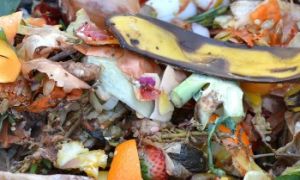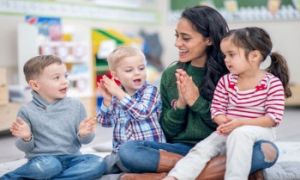

A: No. There is no requirement in the National Regulations, the EYLF, or ACECQA guidance that says educators must add EYLF outcome numbers, sub‑outcomes, or codes to observations. Linking is optional, not mandatory.
Documentation should support children’s learning, not overwhelm educators. When linking becomes a tick‑box exercise, it loses meaning and adds unnecessary workload. This article breaks down what’s actually required, what’s optional, and how to use EYLF links only when they genuinely add value.
Observing children has never been the problem. Educators are natural noticers—tuned into the small sparks, the emerging skills, the quiet breakthroughs. What drains time and energy isn’t the observing but the unnecessary layers of documentation that have crept into practice over the years. Long stories, duplicated uploads, rigid templates, and quota‑driven expectations have turned a simple professional tool into a paperwork burden.
But the truth is simple: meaningful observations are brief, flexible, and entirely manageable. When we strip away the excess, we return to what the planning cycle was always meant to be—a clear, responsive loop that supports children’s learning and frees educators to do what they do best.
Observations are more than compliance—they’re acts of care, advocacy, and professional insight. When educators write observations with emotional intelligence and sector-savvy language, they make children’s learning visible, amplify their voices, and strengthen the case for quality early childhood practice. This guide supports educators in writing observations that are purposeful, symbolic, and aligned with the EYLF.
Q: A strengths-based approach focuses on what children can do, rather than what they lack. It celebrates each child’s capabilities, interests, and efforts and uses these as the foundation for learning and development.
A: While photos can enrich documentation by capturing moments visually, many observations are just as powerful when conveyed through thoughtful narrative, voice transcripts, symbolic sketches, or emotionally intelligent reflection.
Observation starter prompts invite educators to notice deeply, listen generously, and document with emotional intelligence. This article offers themed prompts across routines and play contexts, enabling educators to write about children's experiences without assumptions or judgment.
Creating open-ended observations in early childhood settings is all about capturing the richness of a child’s experience without judgment, assumptions, or leading interpretations. These observations invite reflection, celebrate authentic voice, and support responsive planning. The following article is a guide to help you craft them effectively.
A: There’s no fixed number of observations required from educators across all early childhood services in Australia—it depends on your service’s philosophy, policies, and the needs of the children.
Writing a group observation in early childhood education is both an art and a strategic tool—it captures collective learning while honoring individual voices. Here's a guide to help you craft meaningful, pedagogically sound group observations that align with the planning cycle and resonate with families and educators alike.
 Here is the list of the EYLF Learning Outcomes that you can use as a guide or reference for your documentation and planning. The EYLF… Read More
Here is the list of the EYLF Learning Outcomes that you can use as a guide or reference for your documentation and planning. The EYLF… Read More
 The EYLF is a guide which consists of Principles, Practices and 5 main Learning Outcomes along with each of their sub outcomes, based on identity,… Read More
The EYLF is a guide which consists of Principles, Practices and 5 main Learning Outcomes along with each of their sub outcomes, based on identity,… Read More
 This is a guide on How to Write a Learning Story. It provides information on What Is A Learning Story, Writing A Learning Story, Sample… Read More
This is a guide on How to Write a Learning Story. It provides information on What Is A Learning Story, Writing A Learning Story, Sample… Read More
 One of the most important types of documentation methods that educators needs to be familiar with are “observations”. Observations are crucial for all early childhood… Read More
One of the most important types of documentation methods that educators needs to be familiar with are “observations”. Observations are crucial for all early childhood… Read More
 To support children achieve learning outcomes from the EYLF Framework, the following list gives educators examples of how to promote children's learning in each individual… Read More
To support children achieve learning outcomes from the EYLF Framework, the following list gives educators examples of how to promote children's learning in each individual… Read More
 Reflective practice is learning from everyday situations and issues and concerns that arise which form part of our daily routine while working in an early… Read More
Reflective practice is learning from everyday situations and issues and concerns that arise which form part of our daily routine while working in an early… Read More
 Within Australia, Programming and Planning is reflected and supported by the Early Years Learning Framework. Educators within early childhood settings, use the EYLF to guide… Read More
Within Australia, Programming and Planning is reflected and supported by the Early Years Learning Framework. Educators within early childhood settings, use the EYLF to guide… Read More
 When observing children, it's important that we use a range of different observation methods from running records, learning stories to photographs and work samples. Using… Read More
When observing children, it's important that we use a range of different observation methods from running records, learning stories to photographs and work samples. Using… Read More
 This is a guide for educators on what to observe under each sub learning outcome from the EYLF Framework, when a child is engaged in… Read More
This is a guide for educators on what to observe under each sub learning outcome from the EYLF Framework, when a child is engaged in… Read More
 The Early Years Learning Framework describes the curriculum as “all the interactions, experiences, activities, routines and events, planned and unplanned, that occur in an environment… Read More
The Early Years Learning Framework describes the curriculum as “all the interactions, experiences, activities, routines and events, planned and unplanned, that occur in an environment… Read More

Food waste is an unpalatable truth in many early childhood services. . It is not...
See more...
Fostering independence in children is one of the greatest gifts we can give them. A...
See more...
Routines and rituals are an integral aspect of growing up. They not only teach young...
See more...© 2009-2025 Aussie Childcare Network Pty Ltd. All Rights Reserved.

